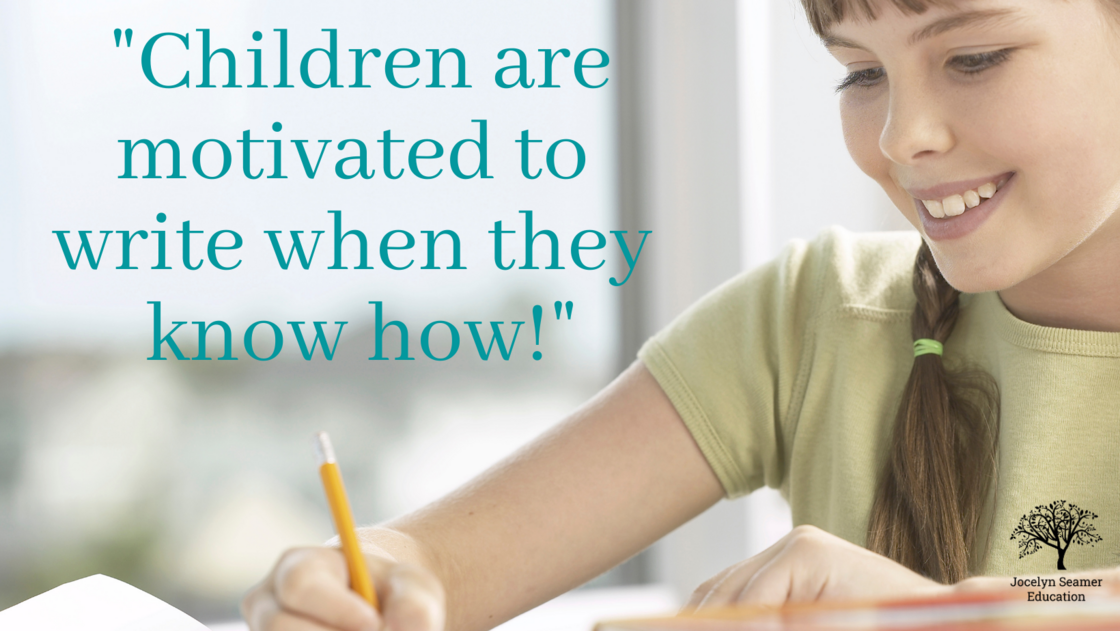The Key to Increasing Student Motivation to Write

There’s a funny idea that floats around in education, that the way to increase student motivation for learning is to make things more engaging. This can mean a variety of things including making learning more ‘authentic’, giving more choice in learning activities and (heaven forbid) making learning fun.
Let’s talk about why authenticity, choice and fun can lead us down the path to instructional ruin if not applied in moderation.
- Authenticity is a concept that we hear often. It is often accompanied by the idea that the best kind of writing is authentic. Well, looking at this definition of authentic below, I would have to agree. I don’t want student writing to be fake. I don’t want student writing to be copied and I DO want student writing to be true and accurate. But when most people talk about authentic writing, they are talking about ‘real world’ or for a ‘real purpose’. The suggestion being made is that any writing not for a real-world focus is impoverished or somehow lacking in soul. It also implies that students will be better writers if they are writing a letter home to their parents than if they are responding to text. Or that a writing focus that comes from the teacher is less valuable than one that comes from the child themselves.

- Choice is another concept that has become a little skewed. It is true that providing appropriate ‘voice and choice’ for students in their learning leads to greater engagement. I have seen the result of increasing agency and involving students in decision making, however when we take this idea too far, we can end up putting children in the position of being left on their own without adequate support to write. It can also lead us down the path of choice boards, multiple intelligences and free choice, which can all be problematic in their own way. One of my main concerns with ‘free choice’ is that, unless children are proficient writers who enjoy writing and are highly motivated, too much choice (or any choice) can overwhelm them. Ever been presented with 25 flavours of ice-cream to choose from or spent half an hour deciding what to watch on Netflix? For children who are not confident with writing (and that would be a large chunk of our kids) free choice will lead them to choose the thing that ‘looks the easiest’ and even then, they’ll likely still lack engagement because they simply don’t have enough skill and knowledge to generate ideas and get them down onto the paper.

- Making learning fun (sigh). I have a real problem with edutainment. I love a sparkly pen and pretty notebook as much as the next person, but it doesn’t make me a better writer. Sometimes our quest to make writing fun sees us providing ‘fun writing prompts’. There is nothing inherently wrong with prompts, however thinking that coming up with the ‘most fun prompts ever’ is going to encourage better writing is like saying that giving more ‘fun painting ideas’ is going to make me a better painter. The prompt might help inspire, but without necessary instruction, the writing just won’t improve.

Now, don’t get me wrong, connecting with the purpose of writing, providing some voice and choice and being a little playful can be useful in helping students feel more engaged in learning. But, let’s be clear. These things alone are NOT going to increase our students level of skill levels and get them to write cohesive, well-constructed texts. They are also not going to increase motivation.
What is going to get them over the line from single, simple sentence writing to those cohesive, well-constructed texts is explicit, systematic instruction. In order for a student to bust out a great text, they need to be able to:
- Know what they want to write.
- Have sufficient background knowledge and vocabulary about the subject of the writing to form ideas and express them orally.
- Know how to orally construct a full sentence including using a range of sentence types with control.
- Know about the structure of texts.
- Be able to make sense of their thoughts and ideas and plan how to arrange them into the structure of the text type they want to write.
- Know about appropriate language for different text types including language features, level of formality and cadence (the flow of words and sentences).
- Be able to physically write, including having automatic and correct handwriting.
- Be able to segment words and write them down (phonemic skills)
- Have a firm grasp on spelling (including morphology and etymology) so that they can put words on paper without too much effort.
- Know how to construct sentences on paper.
- Have enough automaticity in ALL of the skills above to have writing stamina to produce the longer piece of text.

Writing is a highly complex task. There are so many competing skills and knowledge at work that if the lower order skills (handwriting, spelling, sentence structure, text structure, expressive language) require conscious effort, then the cognitive overload is simply too much for the student. In order for proficient writing to develop, the student needs automaticity in the ‘nuts and bolts’ skills so that they can concentrate on the messages and language they wish to use. That is why explicit and systematic teaching is so very crucial in writing instruction. It’s about more than text level pieces of writing, the basic transcription skills or language development. All three must be considered and student learning experiences need to be structured in a way that provides explicit support, some choice and voice, relevance and a little fun. THAT is how we increase student motivation in writing; by building up skills step by step in a way that makes students feel successful.


 Jocelyn Seamer Education
Jocelyn Seamer Education
2 comments
This is the second time this week I have heard people suggest that achievement can come before engagement. Bravo! It doesn't go down well in some circles. When people can do something they will be encouraged to do it more. I echo your thoughts on choice. I teach many students who struggle with literacy, either due to social, emotional or academic barriers. For them the cognitive load of making a choice is a further barrier to just getting started. They feel the pressure to 'get it right'.
Hear hear! I couldn't agree more. Most early writing experiences are so inappropriate and ask students to produce writing beyond their skill level without proper instruction. Frustrating for teachers and, sadly, demoralising for many students.
Leave a comment